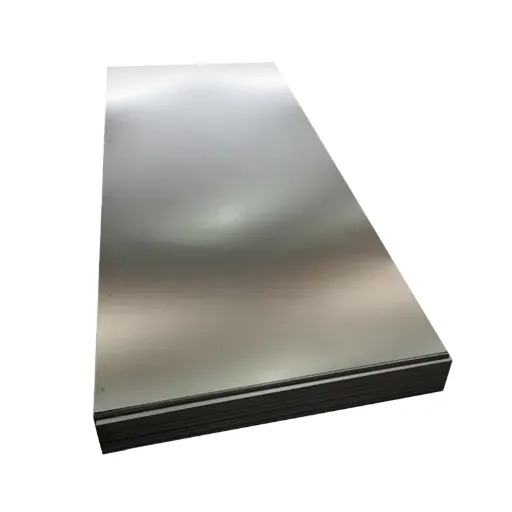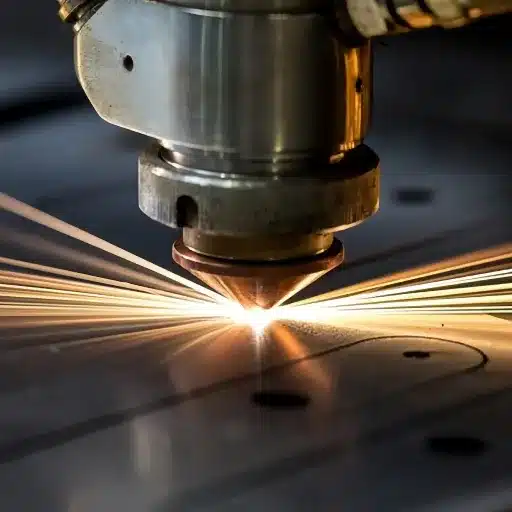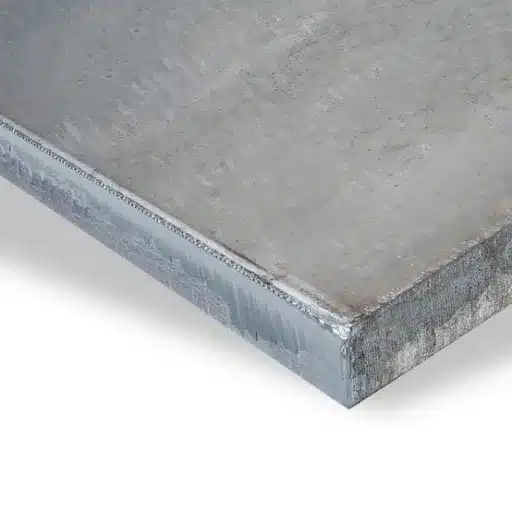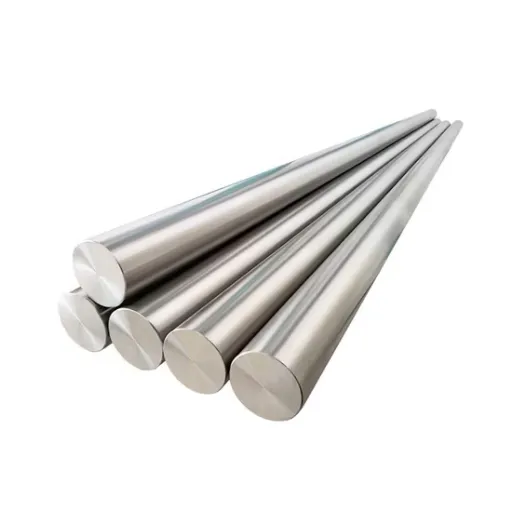You would be surprised to learn that the world of galvanized steel coatings and luxurious sedans has some things in common. As a construction professional trying to grasp the difference between G60 and G90 galvanized steel, or a car aficionado diving into the world of automotive perfection, this article is for you. You are about to learn how G60 and G90 coated galvanized steels protect infrastructures from corrosion, and later how luxury sedans are setting new benchmarks for innovation and refinement. The article aims to provide insight into both topics while showcasing the surprising intersection between practicality and precision. So, sit tight, because we’re about to dive into the ultimate guide to resilience and luxury.
What is the Difference Between G60 and G90 Galvanized Steel?

| Aspect | G60 | G90 |
|---|---|---|
| Zinc Coating Weight | 0.60 oz/sq ft | 0.90 oz/sq ft |
| Corrosion Resistance | Moderate | High |
| Cost | Lower | Higher |
| Lifespan | Moderate | Longer |
| Best Use | Indoor or mild environments | Outdoor or harsh environments |
| Maintenance | More frequent | Less frequent |
Understanding Galvanize and Coating Processes
Galvanizing is the process of coating steel or iron with a protective layer of zinc to prevent rusting and corrosion. Such a coating significantly increases the life of the metal as it protects it from moisture and environmental elements. Methods of galvanization differ, with hot-dip galvanizing being the most common. This method involves dipping the steel into molten zinc, resulting in a uniform and strong coating.
Galvanized steel is often evaluated for quality based on the thickness of the zinc coating applied, using designations like G60 or G90. The G values indicate the total amount of zinc in ounces per square foot applied to both surfaces of the material. G60 means the material has a coating of 0.6 ounces per square foot, and G90 has 0.9 ounces per square foot. The extra zinc in G90 increases corrosion resistance, making it preferable for harsher environments or areas where long-lasting durability is a must.
Other studies now suggest that G90 galvanized steel can outperform G60 by up to 50% in corrosion resistance, especially in humid and salty coastal regions. As reported by NACE, the predicted lifespan of G90 galvanized steel is over 20 years in moderate corrosive environments, while G60 coated materials last approximately 10-15 years. Determining the right coating for your project is crucial based on environmental and functional demands.
Apart from offering longevity, modern processes of galvanizing steel increase sustainability. For instance, continuous galvanizing and zinc-aluminum-magnesium coating not only reduce the environmental impact but also improve steel performance. These modern advancements reveal that the galvanizing industry continually evolves, blending practical needs with science to provide quality materials.
The Importance of Zinc Coating Weight
The amount of zinc coating on galvanized steel is crucial in determining how well it maintains its durability, corrosion resistance, and efficacy. Adequate zinc coating weight ensures the material can withstand environmental factors, thus increasing its life span. Here are five key pointers and data points pertaining the importance of zinc coating weight:
- Corrosion Resistance
Thicker zinc coatings provide better protection against corrosion. For example, steel with a coating weight of 275 g/m² (G90) zinc is forecasted to withstand moisture-laden environments with less maintenance required.
- Lifespan of Materials
Research indicates that increasing the zinc coating weight greatly enhances the life expectancy of steel in severe conditions. For instance, a zinc coating of 600 g/m² (G210) is estimated to guard against deterioration for over 50 years in rural conditions.
- Environmental Conditions
Different applications and exposures necessitate varying amounts of zinc coating weight. Coastal regions face corrosion due to salt-laden air, thus require higher coating weights like 350 g/m² (G115).
- Adherence to Standards
Standards like ASTM A123 and ISO 1461 set minimum zinc coating weights for particular uses. For example, structural steel typically requires at least 450 g/m² for coating weight to ensure compliance and trustworthiness.
- Cost Efficiency
Although spending a bit more on zinc coating weighs increases coating costs, it is cheaper long-term because it saves maintenance work by preventing degradation. For example, it works economically for infrastructure projects like bridges and transmission towers.
By selecting the appropriate zinc coating weight, industries and businesses can achieve optimal performance and longevity in various applications while also reducing expenditures.
Applications and Benefits in Steel Sheet and Coil
| Aspect | Details |
|---|---|
| Applications | |
| Construction | Roofing, wall panels, floor decks |
| Automotive | Car bodies, door panels, fenders |
| Appliances | Refrigerator doors, washing drums |
| Aerospace | Aircraft components |
| Agriculture | Equipment and machinery |
| Benefits | |
| Versatility | Used in various industries |
| Recyclability | Eco-friendly and sustainable |
| Cost-effectiveness | Affordable with long lifespan |
| Precision | Controlled thickness and strength |
| Durability | Resistant to wear and corrosion |
How Does the 2025 Genesis Lineup Compare: G90 vs G60?

The 2025 Genesis G90 and G60 serve different purposes. While both have unique benefits, the G90 is a flagship luxury sedan focusing on premium features, modern technology, and a larger cabin. It smooths and refines the ride, making it best for those who prioritize comfort and top-of-the-line amenities. In contrast, the G60 is a compact luxury sedan that offers better value, versatility, and aggressive performance. Sleeker than G90, this new compact is loaded with modern conveniences, making it attractive to buyers looking for luxury in a smaller, sportier package. Ultimately, the decision depends on whether one prefers the size and opulence offered in G90 or the practicality and agility in G60.
Exploring the 2.5T AWD and V6 Options
| Aspect | 2.5T AWD | V6 |
|---|---|---|
| Engine Type | Turbocharged 4-cylinder | Naturally aspirated 6-cylinder |
| Power Output | Higher torque, moderate power | Higher horsepower, lower torque |
| Fuel Efficiency | Better | Lower |
| Towing Capacity | Moderate | Higher |
| Maintenance | More complex, higher costs | Simpler, lower costs |
| Performance | Quick acceleration, turbo lag | Smooth, consistent power |
| Best Use | Urban, fuel-conscious driving | Towing, heavy-duty tasks |
Luxury Features: Panoramic Roof and Navigation
The luxurious features of the G90 and G60 models make every part of the journey enjoyable. Allow us to describe five of their most notable highlights:
- Panoramic Roof
The large panoramic roof enhances the car’s open feel by allowing plenty of natural light inside. Like any well-designed feature in modern luxury cars, it also includes a shade function for convenience and comfort.
- Advanced Navigation System
With voice commands, 3D mapping, and real-time traffic updates, the navigation system is fully automated and guarantees the user can easily reach any destination.
- Premium Leather Upholstery
The deeply refined leather seats in both models provides a luxurious texture along with incredible comfort.
- Cutting-Edge Infotainment Screen
The infotainment display, which is large and high-definition, makes accessing different apps and music easy and seamlessly strengthens Android Auto and Apple CarPlay compatibility.
- Heated and Ventilated Seats
The front seats’ dual heating and ventilation functions guarantee comfort at any time of the year, whether it’s summer or winter.
Performance: 300 Horsepower and 311 lb-ft of Torque
This vehicle’s performance is exhilarating. It has 300 horsepower and 311 lb-ft of torque, which allows for impressive acceleration and smooth driving, making every drive powerful and enjoyable.
Why Choose BMW Over Genesis G90?
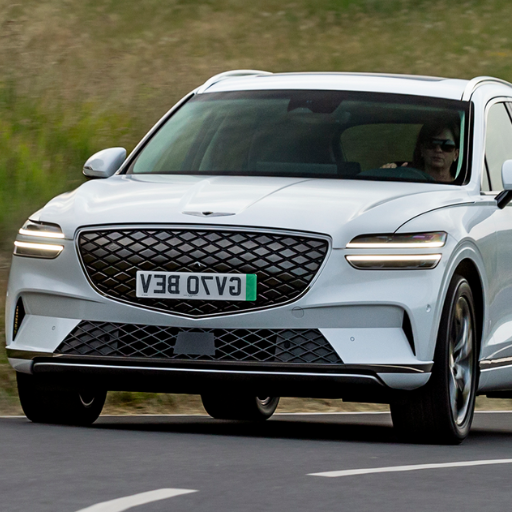
| Aspect | BMW | Genesis G90 |
|---|---|---|
| Brand Prestige | Globally recognized luxury brand | Emerging luxury brand |
| Driving Dynamics | Sporty, agile handling | Comfortable, less sporty |
| Fuel Efficiency | Better MPG and hybrid options | Lower MPG |
| Technology | Advanced infotainment, iDrive | User-friendly, less advanced |
| Customization | Extensive options and trims | Limited customization |
| Resale Value | Higher resale value | Lower resale value |
| Performance | Refined, powerful engines | Smooth but less dynamic |
| Interior Space | More rear legroom and trunk space | Compact rear and trunk space |
The Driving Experience and Refinement
Looking at the two, BMW has a more dynamic driving experience and superior refinement due to advanced engineering and cutting-edge technology.
Comparing Standard Features and Smart Cruise Control
In terms of standard features, BMW has a range of technologies aimed at comfort and convenience. For example, the BMW 5 Series has a high-resolution touchscreen infotainment system integrated with BMW’s iDrive system. Apple CarPlay, Android Auto, wireless charging, and built-in navigation are standard, ensuring ease of use. Furthermore, BMW provides advanced safety features such as lane departure warning, automatic emergency braking, and blind-spot monitoring, offering drivers peace of mind.
On the opposite end, the Genesis G90 competes with its own generous standard features, including a 12.3-inch touchscreen display alongside support for Apple CarPlay and Android Auto. It also integrates luxury touches like heated and ventilated seats as standard across the lineup. However, Genesis tends to lean towards more traditional styling with less customization compared to BMW.
Regarding Smart Cruise Control, BMW’s Adaptive Cruise Control system, improved by the Active Driving Assistant, offers precision in speed and distance management as well as limited self-driving features at some traffic levels. The Stop-and-Go feature enables smooth driving at all levels of traffic congestion, including the automatic resumption of movement when traffic eases.
Smart Cruise Control with Stop-and-Go feature also responds with the Genesis G90. However, the BMW system enhances functionality with additional driver-assist features like Traffic Jam Assistant and auto-lane centering, making long drives much more enjoyable.
In summary, although both manufacturers incorporate powerful technologies in their products, BMW focuses more on advanced safety systems and cutting-edge features, making the ride more futuristic and sophisticated.
Design and Sport Alloy Wheels
In terms of design, BMW has a more refined dynamic and aesthetic for its sport alloy wheels. BMW meticulously designs its sport alloy wheels to improve performance and add visual appeal. Coupled with sleek body designs and bold lines, they have a modern, sporty look that appeals to those who prefer premium and athletic vehicles.
How Does Galvanized Steel Perform Against Corrosion?
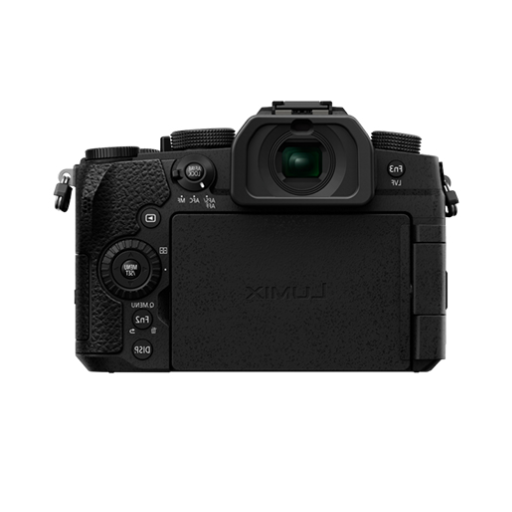
Galvanized steel’s performance against corrosion is exceptional because of the protective zinc coating. The coating prevents water and oxygen from reaching the steel surface. Moreover, the zinc offers sacrificial protection by corroding first before the steel does. This makes galvanized steel ideal for outdoor structures and areas exposed to moisture or harsh weather conditions.
The Role of Zinc in Corrosion Protection
Zinc is essential for protecting against corrosion because it provides a reliable and long-lasting coat on steel surfaces. It is beneficial because of some characteristics and mechanisms that it possesses. Here are five benefits and features of zinc that assist in corrosion protection:
- Barrier Protection
The zinc coating prevents moisture, oxygen, and other harmful substances from contacting the steel surface, so no oxidation or rusting occurs.
- Sacrificial Anode Effect
Zinc serves as a sacrificial metal as it will corrode before the underlying steel does. This electrochemical process protects the steel even when the zinc coating is scratched or damaged.
- Self-Healing Properties
Zinc’s ability to “heal” small scratches is through the formation of zinc oxide or zinc carbonate, which seals the exposed area and restores zinc’s protection against corrosion.
- Extended Lifespan
Zinc delays corrosive reactions, making galvanized steel endure decades even in harsh environments. This greatly reduces maintenance costs and the need for frequent replacements.
- Environmentally Friendly
As a recyclable material, zinc’s use in galvanization aids sustainable practices. Plus, fewer steel replacements in the long run decrease the environmental footprint.
The noted benefits explain why zinc is commonly used to safeguard steel, particularly for structures and machinery used outdoors and subjected to harsh environmental conditions.
Understanding Coating Weight Specifications
| Aspect | Details |
|---|---|
| Definition | Mass of coating per unit area |
| Measurement Units | oz/ft² (Imperial), g/m² (Metric) |
| Conversion | 1 oz/ft² = 305 g/m² |
| Common Standards | ASTM A653, A792, A875 |
| Designation Examples | G90 (Imperial), Z275 (Metric) |
| Testing Methods | Triple Spot Test (TST), Single Spot Test (SST) |
| Measurement Techniques | Weigh-strip-weigh, Magnetic gauges |
| Coating Types | Galvanized, Galvannealed, Al-Zn, Zn-Al-Mg |
| Performance Relation | Thicker coating = Longer corrosion resistance |
Engineer Insights on Durability and Longevity
Understanding how long galvanized steel will last requires engineers to consider several critical factors. Here is an organized list of the most relevant performance and longevity insights alongside data points:
- Coating Thickness
Galvanized steel tends to last longer when there is a thicker zinc coating. Each micrometer of zinc coating is estimated to prolong protection by 1-2 years in moderate environments.
- Environmental Exposure
Every environment has a unique degradation rate, which impacts the steel. Urban and coastal areas with higher humidity, pollution, or salt often accelerate wear and tear.
- Maintenance Requirements
Regular inspections and proactive maintenance help address emerging issues, thus significantly extending the service life. Simple repairs to damaged coatings help prevent corrosion from extending to underlying layers.
- Surface Preparation
Enhancing adhesion starts with proper surface cleaning before galvanization. Pre-treatments like pickling and stripping result in higher-quality and more durable galvanization.
- Alloy Composition
Changes in the galvanization of zinc alloys may affect durability. The addition of magnesium or aluminum to the zinc alloy improves corrosion resistance in highly aggressive environments.
Applying appropriate design and these factors during construction can make steel structures more durable and efficient. Ensuring decades-long optimal performance requires rigorous data analysis and proper material selection.
What Makes the 2025 Genesis a Top Choice for Luxury Sedan Enthusiasts?

The 2025 Genesis is a clear leader in the luxury sedan market with its fuel-efficient and powerful engine, comfort, cutting-edge technology, and smooth handling. The infotainment system, safety features, and comfort settings all add to the driver and passenger amenities. Elegantly designed while remaining reliable, the 2025 Genesis remains a well-balanced value for those seeking luxury and innovation.
Advanced Electronically Controlled Suspension with Road Preview
| Key Point | Details |
|---|---|
| Technology Name | Advanced Electronically Controlled Suspension (Preview ECS) |
| Core Function | Adjusts suspension based on road conditions |
| Sensors Used | Front-facing camera, navigation data |
| Speed Range | Operates between 10-130 km/h |
| Adjustment Frequency | Every one-thousandth of a second |
| Road Condition Detection | Scans for bumps, potholes, and irregularities |
| Control Mechanism | Single solenoid valve for compression and extension |
| Advantages | Enhanced comfort, reduced weight, lower maintenance |
| Weather Adaptability | Combines camera and navigation for low-light or rain conditions |
| Data Processing | Uses advanced ECU with 100 calculations per second |
| Integration | Works with navigation and autonomous driving systems |
| Cost Efficiency | Minimal additional hardware required |
| Limitations | Reduced performance in heavy rain or close proximity to other vehicles |
| Additional Features | Reduces body roll, adjusts for uneven surfaces |
Innovative Features: Surround View Monitor and Wireless Connectivity
Surround View Monitor in the 2025 Genesis uses multiple cameras placed strategically around the vehicle to show a 360-degree view of the car’s surroundings. As a bird’s-eye view system, it significantly improves driver safety and awareness when parking or moving at low speeds. The elimination of blind spots increases the aid provided to the driver in avoiding objects and potential hazards. Along with the Genesis frame’s high-resolution screens, the clarity and precision during movement in tight spaces are effortless. Research shows that vehicles using surround-view systems considerably reduce parking-related accidents, thus contributing to road safety.
In addition to the surround view feature, Genesis offers state-of-the-art wireless technology. This technology enables integration with smartphones and other devices via Bluetooth and Wi-Fi. Passengers and drivers alike can access their music, navigate using apps, or receive and make calls without wires. Regarding phone accessories, the wireless charging pad offers convenience and quick and efficient charging for specific devices. Recent market data indicates that wireless technology is becoming vital to automotive evolution, with new car buyers considering this feature indispensable. The combination of these technologies ensures a connected and safe drive and solidifies the commitment of the Genesis brand to innovation and luxurious automotive craftsmanship.
The Sophistication and Sculpture of Design
The sculpted details and design sophistication of the Genesis vehicles demonstrate my strive to find a refined equilibrium between elegance and innovation. Every line and curve is shaped to achieve visual appeal and the utmost functionality for the design, improving the driving experience.
References
- Overview of Reader and the Review Workflow – This page from the University of Wisconsin provides details about graduate school application processes, including G60 and related codes.
- Recommend Applicant(s) for Admission (G60) – Another resource from the University of Wisconsin, explaining the steps for recommending applicants for graduate school admission.
- Graduate Council Minutes – January 30, 2003 – A document from the University of Tennessee discussing graduate council matters, including references to G60 and G90.
Frequently Asked Questions (FAQ)
Q: What are the primary differences between G60 and G90 regarding features?
A: The G60 and G90 differ mainly in their size, luxury features, and performance. The G60 offers a sporty feel with a 2.0-liter engine, while the G90 provides a more luxurious experience with options like Nappa leather seating surfaces, a panoramic sunroof, and a premium audio system.
Q: Does the G90 offer customizable ambient lighting?
A: Yes, the G90 offers customizable ambient lighting to enhance the luxury experience inside the vehicle. Drivers can adjust the atmosphere according to their preferences.
Q: Is all-wheel drive available for both the G60 and G90?
A: Both models offer all-wheel drive, which enhances traction and stability and makes it suitable for various driving conditions.
Q: How does the G60’s performance compare to the G90?
A: The G60 features a sporty 2.0-liter turbocharged engine, while the G90 offers a more powerful 3.5-liter engine with 375 horsepower. Both provide a dynamic driving experience, but the G90 focuses more on luxury.
Q: What kind of transmission does the G90 feature?
A: The G90 has an 8-speed automatic transmission, which provides smooth and efficient shifts for a comfortable driving experience.
Q: Are heated and ventilated front seats standard in the G90?
A: Heated and ventilated front seats are standard equipment in the G90, ensuring comfort in various weather conditions.
Q: What convenience and safety features are included in the G90?
A: The G90 includes a range of convenience and safety features, such as lane-keeping assist, blind spot monitoring, and an advanced instrument cluster, to enhance driver awareness and control.
Q: Does the G90 offer a premium audio system?
A: Yes, the G90 comes with a premium audio system that provides an exceptional listening experience and enhances the vehicle’s overall luxury feel.
Q: What materials are used to construct the G60 and G90?
A: Both models incorporate high-quality materials. The G60 may use hot-rolled steel for durability, whereas the G90 utilizes carbon fiber elements and nappa leather seating surfaces for added luxury.
Q: Can I test drive the G60 and G90 before purchasing?
A: Yes, potential buyers are encouraged to schedule a test drive to experience the features and performance of the G60 and G90 firsthand.


